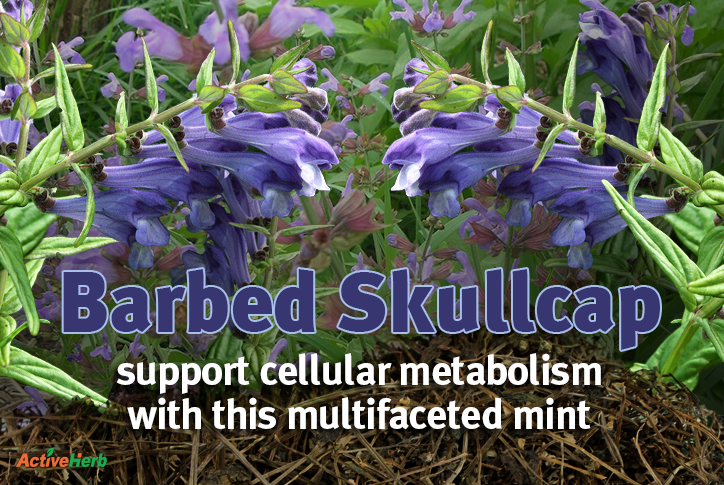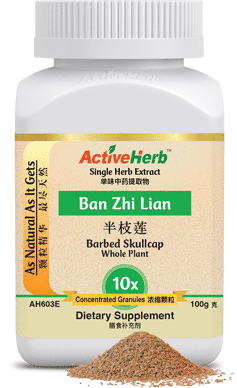Barbed Skullcap: Support A Healthy Cell Growth With This Multifaceted Mint

When you think of mint what comes to mind? Perhaps chewing gum. A sprig of garnish on a salad or cocktail. Maybe a flavorful stir fry ingredient in Thai food. Medicinally, in TCM, mint (Bo He, peppermint) is best known as a Lung tonic.
Scutellaria is another type of mint that you should get to know. Approximately 50 Scutellaria species are used in TCM formulas. One species, Ban Zhi Lian (Barbed Skullcap) supports cellular growth and health in several ways.
After you learn about Ban Zhi Lian, you’ll have a much deeper appreciation for mint.
What is Ban Zhi Lian?
No, skullcap does not refer to a beanie you wear on your head in the winter. The name “skullcap” refers to how the flower of the scutellaria species of plants resembles the shape of a medieval battle helmet. The Scutellaria genus is the second largest in the family of plants known as Lamiaceae, better known as mint. (If you’re keeping botanical score at home, scutellaria contains 360 species while the largest genus, salvia, clocks in at 900.)
Ban Zhi Lian is a TCM herb that’s a particular species of Scutellaria, Scutellariae Barbatae. Better known as Barbed Skullcap, Ban Zhi Lian is a multidimensional TCM powerhouse.
What Does Ban Zhi Lian Do?
In TCM theory, the herb clears heat and resolves toxicity. It also disperses blood stasis and normalizes bodily fluid levels.
What does this mean in terms of possible health benefits for you? Ban Zhi Lian supports circulation; the immune system; liver health; and the excretion of urine from the body. And new research published in January of this year suggests Scutellariae Barbatae also supports a normal balance in cellular growth. If you want to live a long and healthy life, a check point in cell growth is critical.
Not to be confused with American skullcap (Scutellaria lateriflora) or Chinese skullcap (Scutellaria baicalensis), Barbed skullcap is a slightly bitter and cooling herb that acts on the Lung, Liver, Spleen, Stomach, and Large Intestine channels.
The active compounds in Ban Zhi Lian include scutellarein, scutellarin, and beta-sitosterol, the latter of which has been shown to support cholesterol levels.
Another plant compound isolated from barbed skullcap is Scutebarbatine A. This compound is the focus of collaborative research conducted by Chinese and British scientists published in Molecular Plant (PDF). The scientists believe that Scutebarbatine A is responsible for giving Barbed Skullcap its cellular-health-supporting properties. This means that Barbed Skullcap may help control the replication of unhealthy cells in the body.
Ban Zhi Lian extract granules from ActiveHerb.com contains the highest concentration of the herb on the market: 10X. This means that a 1.5 gram serving size is equivalent to 15 grams of the herb dried and unprocessed. Moreover, it’s guaranteed to contain at least 2 mg per gram of the active ingredient, scutellarin.
Ban Zhi Lian is also a primary herb in the cell growth balancing formula, Kang Zhong Pian (CellPurger).
Ban Zhi Lian For Toxic Fire
Of all the annoying things that can go wrong with the body, near the top of the list are the painful, pus-filled red bumps or abscesses under the skin. These are known as furuncles.
You can blame furuncles on infected hair follicles. In TCM theory, furuncles are indicative of toxic fire. Sore throats are also a manifestation of toxic fire in the body. In addition, swelling and pain can be indicators that the body has excess heat in one or more channels.
By resolving toxic fire, Ban Zhi Lian can support your health in many ways. To see if Ban Zhi Lian is right for you, consult with a licensed acupuncturist or herbalist.







